Iguazú Falls / Igauçu Travel Guide
View of Iguaçu Falls from Brazil side (known as Cataratas do Iguaçu)
Iguazú Falls is celebrated as one of nature’s most awe-inspiring natural wonders, and because it is situated on the Argentina-Brazil border, you can see it from multiple angles. You'll hear the thundering cascade of water before you see it, surrounded by the lush rainforest that envelops the falls. Before you set off to explore this spectacular destination, this article will provide you with everything you need to know about where to stay, how to get there, and what to expect.
Devil’s Throat (Garganta del Diablo), Iguazú Falls’ largest cascade
Ask a dozen people whether they prefer the Argentina side of the falls or the Brazil side and the answers are likely to be in a dead heat. Fortunately, it’s easy enough to see both sides, so you don’t have to choose. We’ll walk you through all the details for visiting both.
We think you need to give yourself a full day at the Argentina side of the falls and you can do the Brazil side the following day in only a few hours. Of course, there are activities on both sides that can extend your trip, including an easy trip to Paraguay when you’re in Brazil if you want to check off seeing another country during your visit. We’ll cover all that below.
Why Iguazú Falls is a bucket-list destination
If you’re not sure why Iguazú Falls should be one of your bucket-list destinations, it’s because it’s an absolutely spectacular force of nature. Not only are the falls a visual masterpiece, but the pounding water is an incredible sound. We also thought that there’d be a new view here or there, but there was surprise after surprise around every corner.
Iguazú Falls has a series of 275 drops. Devil’s Throat, the tallest waterfall at Iguazú Falls, is 82 meters (269 feet) tall and in total the various cascades span a length of 2.7 kilometers, which makes it nearly three times wider than Niagara Falls. On average 1,500 cubic meters of water flows every second, except during the rainy season when it can pound at 13,000 cubic meters per second.
In Latin the word cataract means waterfalls, which is translated to Cataratas in Spanish. and you’ll sometimes hear Iguazú (in the native Guarani language it’s written as ûasú), which means “big.”
Should I stay in Brazil or Argentina?
See Iguazu Falls in action as we walk you through everything to know!
The easiest and most streamlined way to visit is to stay on the Argentina side the entire time and take a day trip to the the Brazil side. Argentina’s prices had been more affordable, but the economy in Argentina has been drastically changing, so it’s no longer a budget destination.
How long should I visit?
There are a lot of activities you can do while you’re in Iguazú Falls, but we arrived in the evening of Day 1, visited Iguazú Falls (Argentina) on Day 2, Iguaçu Falls (Brazil) on Day 3, and took a flight back to Buenos Aires early in the morning on Day 4.
Sample schedule for a visit to the two national parks
What to know before you go
Do you need a Visa?
Not for Argentina or Paraguay if you’re staying up to 90 days for tourism and you’re from the US, the UK, EU, or Canada.
Beginning April 10, 2025, you will need an e-visa before arriving in Brazil. You can get one by going to the official website at https://brazil.vfsevisa.com.
It’s not possible to get a visa on arrival when you try crossing into Brazil
Don’t forget your passport and e-visa for Brazil!
Vaccinations: You do not need any vaccinations before entering either Brazil or Argentina. Some areas of Brazil recommend the Yellow Fever vaccine, but we did not get it in advance of our trip.
Cash: Bring crisp, new US dollars and plan to go to an authorized exchange location to convert them into Argentina pesos since you will need cash to purchase bus tickets.
Argentina’s currency is fairly unstable and there’s a limited amount of money a bank will allow you to withdraw in a single transaction. There also are high non-network ATM transaction fees for each withdrawal (upwards of $10, which can add up if you need to make multiple withdrawals).
Bring sunscreen, bug spray, and comfortable shoes with some traction! We did not need bug spray when we visited, but it will be much more expensive inside the park. And you will do a lot of walking on some potentially slippery surfaces.
Plan to buy bottled water while you’re here. It’s not recommended that you drink the tap water here without boiling it first.
Gran Meliâ Hotel offers stunning views at luxury prices
Flights to Argentina’s IGR Airport (Cataratas del Iguazú International Airport)
There are a number of airlines that fly from Buenos Aires into IGR airport, but we suggest you avoid Flybondi. The prices might be appealing, but they cancel their flights way too often and are unreliable. Their customer service isn’t great, either, and you can only communicate with them by email versus in person or over the phone. Our original flight to Iguazú Falls was canceled without any notice and rather than try to reschedule our flight, Flybondi didn’t offer to reschedule it. If that happens to you, then you’re stuck paying last-minute prices for tickets, which can be much more expensive. In our case we had a lot of flexibility in our schedule because we were in Buenos Aires for a month and shifted our trip to a time when we could get a better price, but that was three weeks later and it was still an extra $50 per person. Aerolineas Argentina was reliable and we had no issues.
There is no Uber or any other ride share company in Iguazú Falls, but taxis are a great option and are waiting at the airport exit. We ended up using a transfer service because we originally planned to head to Foz de Iguazu for a night (the nearest town on the Brazil side) and couldn’t get a refund when our flight got canceled. When we rebooked, we decided to stay exclusively in Argentina.
Airport transfers from Argentina IGR Airport to Brazil
There are a number of reasons that it makes sense to book a round-trip flight to/from Argentina but still want to transfer from the airport to the Brazil side of the falls. If you’re doing that, we recommend using the transfer service from Iguazufalls.com. which was reliable, competitively priced, and communicated with us well. Border control operates 24/7, but be sure you have an e-visa before your arrival to Brazil if you are visiting on or after April 10, 2025 and are American, Canadian, or Australian. Here’s the official Brazilian government portal to get your e-visa. Ideally, give yourself a month before your trip to ensure everything’s in order, and double check your information carefully so you don’t have to waste time by making changes if there’s a misspelling or wrong dates.
Where to stay: Luxury accommodations in Argentina
If this is a splurge trip and budget isn’t a concern, you could stay at the exclusive Gran Meliâ Hotel, which is the only hotel that’s located in Iguazú National Park. The perk of doing this is that you get great views of the falls or of the jungle, depending on your price point. Accommodations are elegant, the restaurants here are first rate, there’s a spa, and you can really soak in the experience of being inside the park. The downside is that the price of rooms are $500 per night for a jungle view and $1200 per night for a view of the falls.
Uru Apart Iguazú is moderately priced and includes breakfast
Affordable accommodations in Argentina
So if you’re not staying in the park, what is the next best option? Stay near the bus station in Puerto Iguazú. It’s a very walkable town and easy to get around with lots of food and groceries stores to serve any budget. For about $100 per night, you can stay at the highly rated Uru Apart Iguazú, which is only two blocks from the bus station, provides a free breakfast, and has a swimming pool. If your budget is a little smaller and you are easily able to pay cash, Los Cerezos de Ema has kind hosts who helped arrange our taxi back to the airport.
Iguazú Falls (Argentina side)
Since everyone has their opinion about which side of the falls they prefer, it’s subjective which side is better to cover first. In our case, we opted to start with visiting the Argentina side first so we could get our feet wet with the bus system and also get the longer day over with first while our energy levels were highest. You can cover the Brazil side in a few hours, but to cover each section on the Argentina side can take a full day.
Entry tickets to Argentina side of the falls
You can buy park tickets online in advance of arriving in person, and we recommend doing that so you don’t have to wait in a long counter line when you get to the park. Entries are timed, so you’ll want to wait to book until you’re sure what time you’ll be arriving. We booked our tickets while we were waiting for our bus to arrive in Puerto Iguazú. The official website for the Argentina National Parks has information about all of Argentina’s parks, and it can be confusing. It does remind you that in most of Argentina’s parks, including Iguazú, your ticket can be used for a 50 percent discount if you want to go back again within 72 hours from your first entry. Here is the official ticket site for Iguazú Falls Argentina. The park is open to the public every day from 8 am to 6 pm., but the last entry is at 4pm. The last train to Devil’s Throat is at 4:30pm. We recommend that you arrive early so you aren’t rushed. Crowds were very manageable when we were here in early December 2024, but I think we got lucky.
Río Uruguay Bus Lines runs every 15 minutes to the Argentina falls
How to get to Iguazú Falls (Argentina side)
We recommend that you take the bus to the Falls. The bus terminal is central to Puerto Iguazú, there are plenty of buses that depart every day, run 15 minutes apart, and it’s inexpensive. Just remember to bring cash since the vendors here all require you to pay in cash. Perhaps that will change when Argentina’s currency and economy stabilizes, but for now, bring cash. We paid in Argentina pesos.
There are two parts to the bus terminal. You can walk inside and walk up to any kiosk and get tickets to either side of the park. If you arrived from the other side of the bus station, you’ll see buses departing, and adjacent to them is a row of independent offices where you can buy tickets. We bought our tickets from inside the bus terminal.
Puerto Iguazú bus station where buses depart
We ended up choosing Rio Uruguay Bus Lines for both days. They have buses departing for the Argentina Falls every 15-20 minutes and take about 25-30 minutes to arrive at the falls. You arrive directly at the entrance to the falls, which is a bit different from how it works when you are going to the Brazil side of the falls.
Inside the Argentina National Park
The Argentina side of the Iguazú National Park is huge and there’s a lot to do. There are plenty of restaurants, food kiosks, shops, and restrooms. We ate a quick breakfast when we got inside the park at La Selva, a small breakfast buffet where you paid by the weight of what you put on your plate.
Get your bearings and plan out your day. There’s a lot to see and no one perfect way to see it all
Choose your adventure
The Upper Circuit gets you close to the action
However you organize your day, there is a lot to see, so check out the maps at the entry to the park before you start walking. Slather yourself with sunscreen and make sure you’re carrying some water. We started with the Upper Trail (Circuito Superior), then we explored the Lower Trail (Circuito Inferior), and finally, we visited the Devil’s Throat (Garganta del Diablo). The Green Trail (Sendero Verde) is an approach trail to the Upper Trail.
The Upper Trail (Circuito Superior)
We’d heard that the Upper Trail was the best, but we were impressed at what we saw from the Lower Trail as well. Of course, Devil’s Throat is going to be the highlight of your day, so make sure you save time for it. Devil's Throat was formed by the erosion of reddish sedimentary rock, resulting from the powerful cascading waterfalls that emerged at the end of the ice age. It had been closed for several months due to severe damage to the walkway caused by flooding. The park also activates a safety protocol when the river reaches a certain flow rate, which means closing access to the walkway.
One popular activity that we did not do is book a combination jungle boat excursion, which takes you through the jungle on the Yacaratiá trail to Puerto Macuco, where you hop on a boat that sails along the Lower Iguazu River. You’ll get soaked to the skin while viewing Devil’s Throat and the San Martín waterfall if you take the tour from the Argentina side. However, If you want to experience the views from the Upper and Lower circuits, you’ll need to choose to visit either the Devil’s Throat from the lookout OR do the excursion. There won’t be time for all four pieces. Fortunately, the park offers a 50 percent discount on a second day that’s within 72 hours of your first arrival, so if you have a little extra time, that’s a great way to do it all.
There’s a similar ride on the Brazil side, but it costs a bit more and takes you through some smaller waterfalls. It’s a good option if you don’t want to sacrifice anything from the Argentina side and are okay to get soaked by a smaller waterfall.
Coatis can scratch and bite. Don’t touch or feed them!
We saw our share of coatis, a raccoon-like animal that live in the park. They aren’t afraid of people, but that doesn’t mean they are domesticated. There are graphic signs everywhere reminding you that they can bite or scratch and that you should avoid feeding them or trying to pet them. Regardless, we saw people trying to do those things. You do not want your day cut short because you had to rush off to the hospital for a rabies shot!
Be prepared to do a lot of walking here, but fortunately there are trains that will take you to various sections of the park. You need to get a ticket in advance of hopping on but they’re free and are just for the park to manage the queues.
The Upper Trail is a longer walk, but we could see the falls through the trees and each glimpse was as interesting as the previous one. Pathways also lead to views directly above certain cascades, which sometimes were underwhelming individually but astonishing when you see them collectively. You’ll see birds, iguanas, and interesting flora.
The Lower Trail (Circuito Inferior)
The Lower Circuit requires you to walk uphill a short distance and then it seems like the views will be a disappointment. But then you see some of the great panoramas and you see how equal but different the two paths are. There are signs reminding you to walk carefully, and you should be mindful of those signs. It depends on the water levels but you might find that the metal grating is slippery in parts. If you’re wearing sandals, it’s good if there’s some tread on them. I was lulled into a false sense of security when the majority of the path was dry, but then we came across an area that actually was super slippery. I didn’t fall, but if you’re walking too quickly, you might be caught off guard.
Snack kiosks and restrooms are throughout the park
Devil’s Throat (Garganta del Diablo)
We recommend using the train when you go to Devil’s Throat because the walking path is dirt and isn’t ideal. Some people choose to head to Devil’s Throat first because they want to take the best pictures before it gets too crowded. You may get soaked and you can use the day to dry off and it can keep you cool. But chafing might not be fun, so some people opt to bring a rain jacket or pick up a plastic poncho in one of the many shops scattered throughout the park to keep your clothes dry. Your hair also might be pretty frizzy afterwards, so keep that in mind if you are going to be Instagramming the rest of your day.
We had to wait for a train to arrive, but it was fine because it gave us time to get off our feet and get a snack. We bought a sandwich to share, a bottle of water, and a bag of chips for US $13.15.
We chose to save it for last, and we don’t regret it. While we did have to wait our turn to take our selfies, we could still enjoy the epic majesty in the meantime. That ended up being the highlight of our day, and everything else might have felt smaller and lesser if we would have started there first. There’s a professional photographer available to take your photo for a fee if you’re interested in doing that. It’s possible to get yourself completely soaked here or just enough of a sprinkle to know you were here. Of course, people with glasses will want to take them off to keep them dry or bring along some wipes to clean them off afterwards. You’ll also want to be mindful of your camera gear. While our phones were okay to get a little bit wet, our DJI Osmo Pocket 3 is not waterproof. We had tried to pick up a waterproof camera when we were in Argentina, but the tariffs and taxes on imported goods made them three times what they cost in the US.
Some people opt to bring a change of clothes that they store in the small- and medium-sized lockers at the front entrance to the park, and that’s a great compromise if the day is cooler and you want to get soaked but still enjoy the day. You can pay at the cashier in the gift shop to the left of the entrance and just need to get your belongings out by 6 pm.
Devil’s Throat, Argentina side. We had an overcast day, but it was still very humid
Throughout your day you’ll hear helicopters. You can only book a helicopter tour from the Brazil side of the falls and they last a brief 10 minutes. We recommend you skip it. Argentina doesn’t allow them because the noise is stressful for the wildlife.
Since there was nothing in the park that could top our experience at Devil’s Throat, we caught the train back to the entrance of the park where we waited in a queue for the next bus to take us back to the bus terminal at Puerto Iguazú.
Dining in Puerto Iguazú
What could be a cap to an amazing day seeing such an impressive force of nature? An amazing splurge dinner at Aqva Restaurant, an Argentine steakhouse fit the bill perfectly. We had mixed results in a few of the restaurants in Buenos Aires, but service here was attentive, the steaks were exceptional and cooked perfectly, the wine was delicious, and the cappuccino was a perfect wrap-up to the meal. Aqva also is known for its well-prepared seafood. We arrived without a reservation, but there’s a link on their website to book in advance using texting on WhatsApp, which we’d recommend. WhatsApp will translate for you, so you don’t have to worry about making a phone call if you can’t speak Spanish. Our big regret is that there was no way we had room for dessert, even though I took some of my dinner home for the next day.
Address: Puerto Iguazú Misiones AR, Av. Córdoba s/n, N3370 COB, Argentina
View of Iguazú Falls from Brazil side (known as Cataratas do Iguaçu)
Visiting Iguaçu Falls (Brazil side)
Entry tickets to the Iguaçu National Park (Brazil side of the falls)
The official website for Iguaçu National Park Brazil is much more comprehensive than the Argentina Iguazú Falls site, which is primarily for buying tickets and reading about government announcements. You’re encouraged to buy your tickets in advance online, but that’s partially because there are a ton of upgrades you can book that give you exclusive hours at the park, including Nighttime at the Falls and Pasta Dinner, Sunset at the Falls and Drinks, and Dawn at the Falls and Breakfast, among other options. You also can rent your locker in advance. While you can bring Brazilian Real currency with you, we didn’t bother and we never needed cash. Everyplace accepted credit cards while we were in Brazil.
Entry ticket kiosks are available at the main entrance to the park
Of course you can book regular tickets as well, but note that you will want to have a good degree of certainty for when you will arrive at the main entrance since the tickets have a timed entry. You also will need to include your passport number when booking. We tried to order our tickets online when we were on the bus from Puerto Iguazú, but for whatever reason we couldn’t get the information to submit properly. It worked out fine. As soon as we arrived at the main entrance, we walked up to the kiosk and bought our tickets using a credit card. We had to wait a bit for the next departure, but it wasn’t an unreasonably long wait. It’s still worth trying to do online in the event the park has long lines.
Bus to the Brazil side of the Falls (Iguaçu Falls)
Similar to how the Argentina falls works, you can go to any vendor at Puerto Iguazù bus terminal to get bus tickets to get to the Brazil side of the falls. It matters a bit more which vendor you choose because while all the buses run every hour, you want to choose a vendor that has the soonest departing bus. For instance, one vendor might run its buses at 9:15am, 10:15am, 11:15am, and so on, while another vendor runs 9:45am, 10:45am, and 11:45am. You’ll want to choose the vendor that is closest to your desired departure time so you don’t have to wait as long.
Before you get on the bus, make sure you have your passport (and e-visa if you are visiting on or after April 10, 2025 and you are American, Canadian, or Australian!
Immigration in Brazil (bus stop)
The bus will stop at the Brazil border and wait while everyone gets out and gets their passports and e-visas checked and verified. Make sure you brought your e-visa if you are visiting after April 1, 2025 since there are no visas on arrival. The line moves fairly quickly. You’ll hop on the same exact bus that you arrived on, and the bus will continue traveling to the entrance of the park, which takes approximately another 20 minutes or so, depending on traffic, which wasn’t an issue when we visited.
Main Entrance to Iguaçu Falls (Brazil)
Regardless of whether you take a bus or a taxi, you’ll be dropped off at the entrance to Iguaçu National Park, which is not where the Brazil falls begin. From here you’ll walk through the large main building, which has shops, dining, and the queues that lead to the back side of the building where official Iguaçu National Park buses arrive to take you to the trail to the falls. The National Park buses are built into the cost of the entry ticket to the park and their departures are timed. Along the way to the falls, you have the opportunity to get off the bus and hike along one of a few different nature trails.
We bypassed the hiking trails and went straight to the entry to the path for the falls. When we finally arrived, a few things surprised us. First of all, there is only one route along the falls and the path took only 90 minutes. There are some stairs to the observation tower and part of it is fairly steep, or you can take an elevator. Because it’s only one primary path, it got more crowded than the Argentina side. The views of the falls were different, but equally spectacular. The entry immediately has stunning views of the falls and there’s no meandering path. You walk out, and boom, everyone is snapping photos of the incredible panorama.
Map of the Iguaçu National Park (Brazil) path of the falls, known as Trilha das Cataratas
What to Expect from Iguaçu Falls (Brazil)
We were lucky that the sun was shining on the day we visited the Brazil side of the falls. Argentina allowed us to experience the cascades from the top and the middle, but Brazil fills in all the blanks and allows you to see an entire panorama. You also won’t have any issues if you are looking for food, snacks, or a restroom.
Iguaçu Falls (Brazil) is a panorama of waterfalls
We don’t really know what constitutes an individual cascade, but you could more easily have a go at counting them from this side of the falls. It almost feels like individual pieces of paradise versus one single collection.
Counting the falls seems easier to do from this vantage point in Brazil
The path along the falls is approximately 1.6 kilometers (one mile) long, but the views are absolutely magical. You can choose to go on the extension arm and get close to the Devil’s Throat, but you will get drenched from the spray of the falls. Either bring a rain jacket or pick up a poncho while you’re here. Also make sure to protect your camera equipment and anything else that could get ruined. The walk here is more straightforward with less forest and more of a plain, one-sided walkway.
At the end of the main path is an observation tower that spans three floors. There is a photographer willing to take photos for a fee, but I found that you could get pretty great shots of your own from nearly every angle without waiting very long for the crowds to thin. That’s probably because the section deadends into a corner and the adjoining food and shopping area gives people an excuse to keep moving.
For as many jaw-dropping views as there were, we felt a little bit of a letdown when we were finished. It was like being on a rollercoaster. The ride was thrilling but over too soon. You almost want to go back to the start and go through it over again!
There are a few advantages to this park over the Argentina side, including a more panoramic view of Devil’s Throat. In Argentina, you are practically inside it, but Brazil allows you to stare it down in a different way. You also get right next to the final waterfall, which is a true force of nature.
We liked that our first day was on the Argentina side so that when we got the sweeping views of the Brazil side we had more context for what we were seeing.
Covered waiting for official park bus back to the main entrance
Before leaving the trail to hop back on the bus, we encourage you to cool down after the humid day with a cup of refreshing and tasty açaí and cupuaçu, which we highly recommend. Both are fruits native to the Amazon rainforest, so you can fully appreciate their unique flavors and cultural significance to the region and indigenous communities. They aren’t heavily processed ingredients here like they would be in many other places.
The wait for the park bus can be a 30-minute wait or so, depending on how crowded it is in the park and what time you’re departing.
Once on the bus you can stop at one of the additional hiking paths to extend your day. We were beat, so we did everything in reverse, including getting dropped off at the entrance to the park and then waiting for the Puerto Iguazú bus to arrive. The wait for that bus was shorter. Again, you’ll stop at customs and immigration services will review your passport and e-visa. The bus waits while everyone finishes up and then gets everyone back on the road. By the time you’re finished, you’ll feel like a pro at the process.
There are additional trails for nature hiking in the park that don’t involve the path along the falls





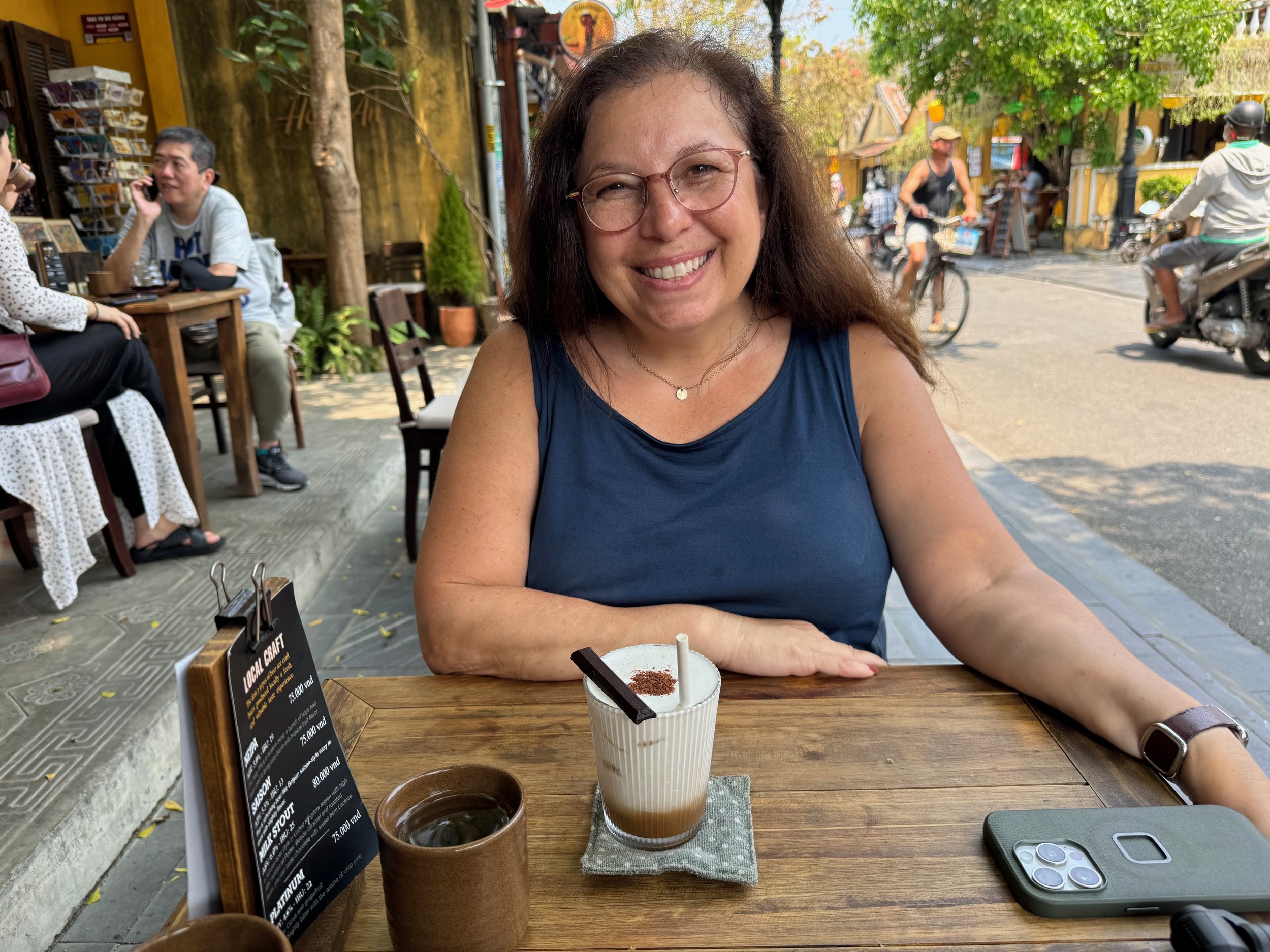
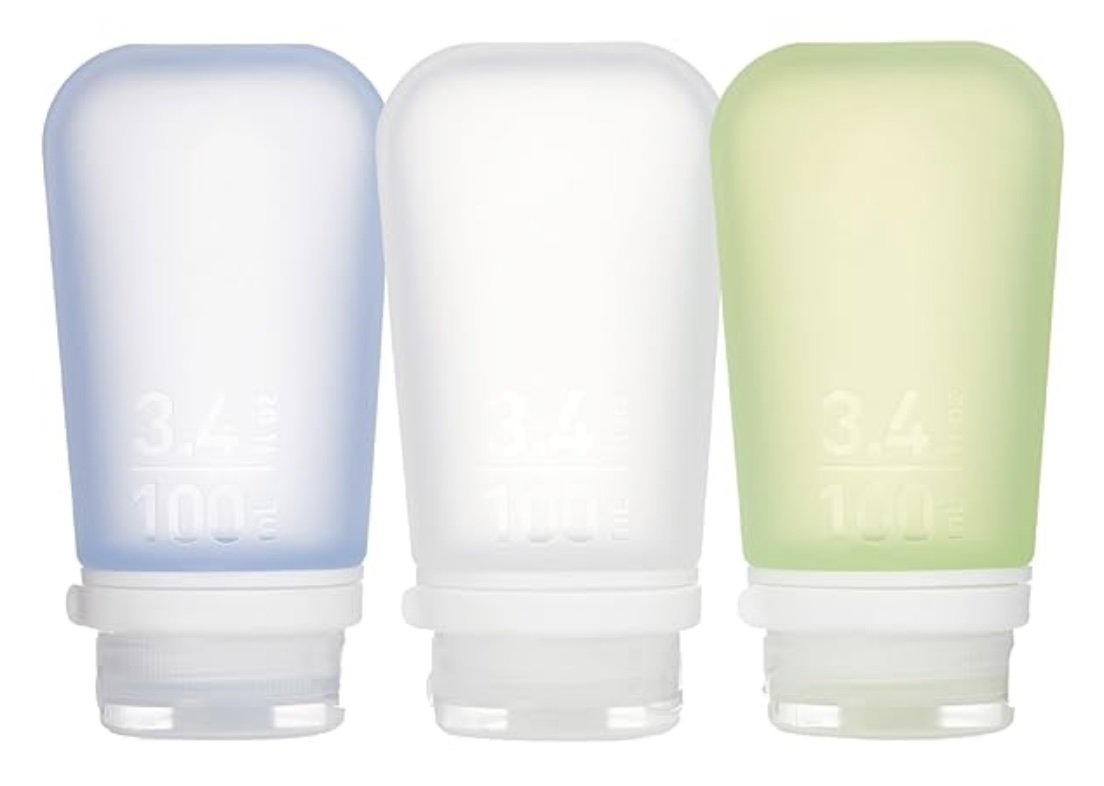
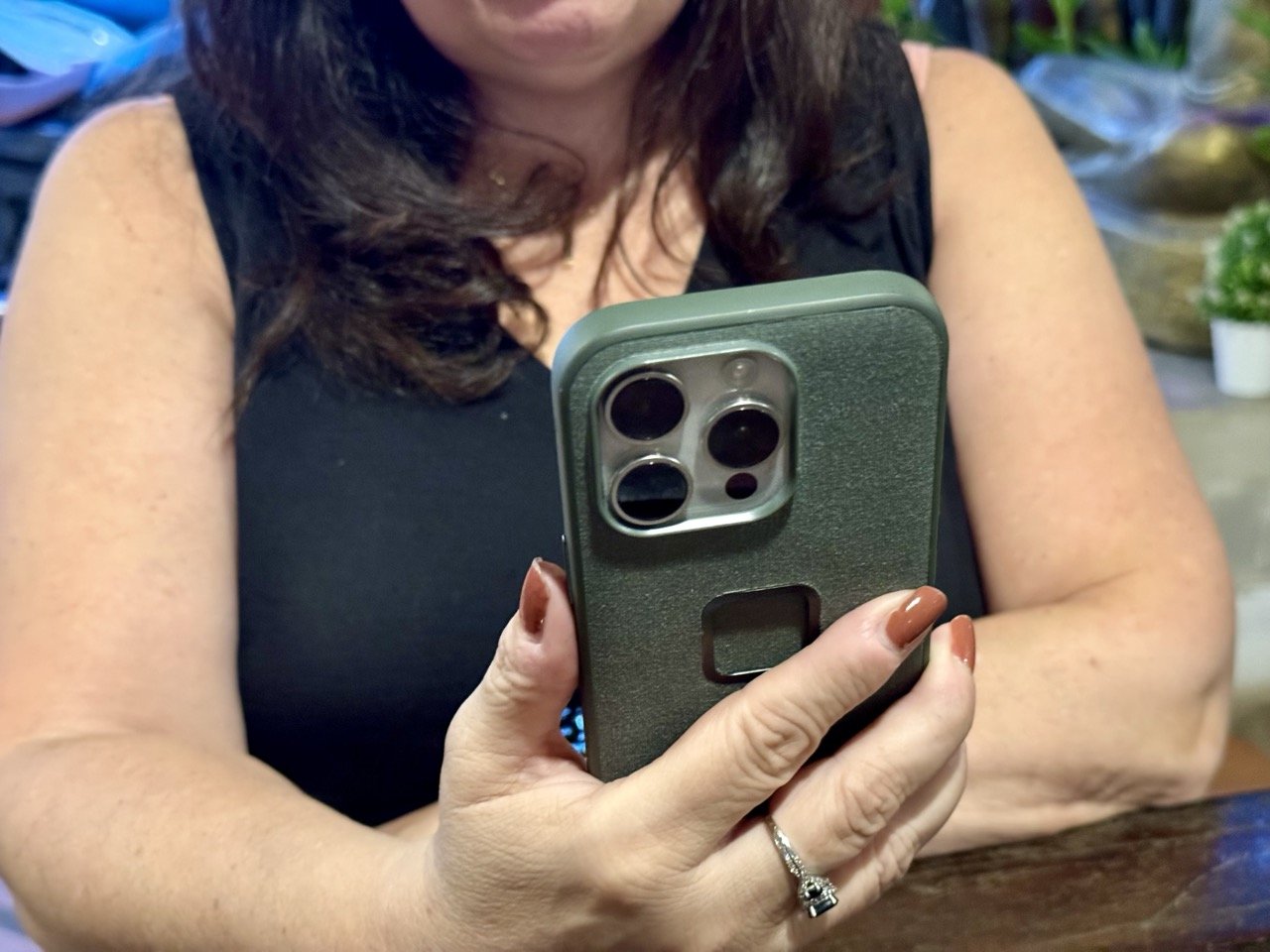






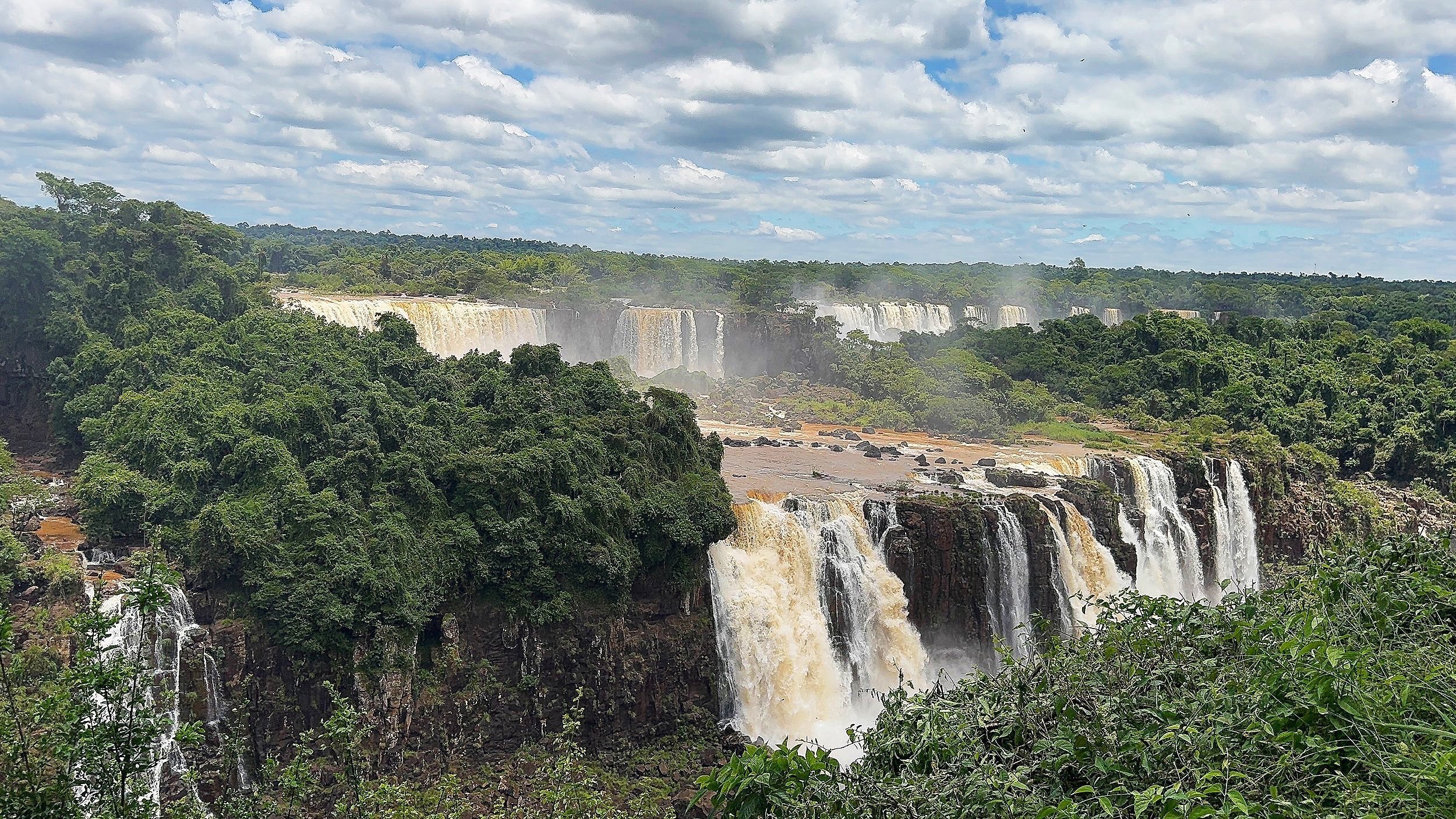
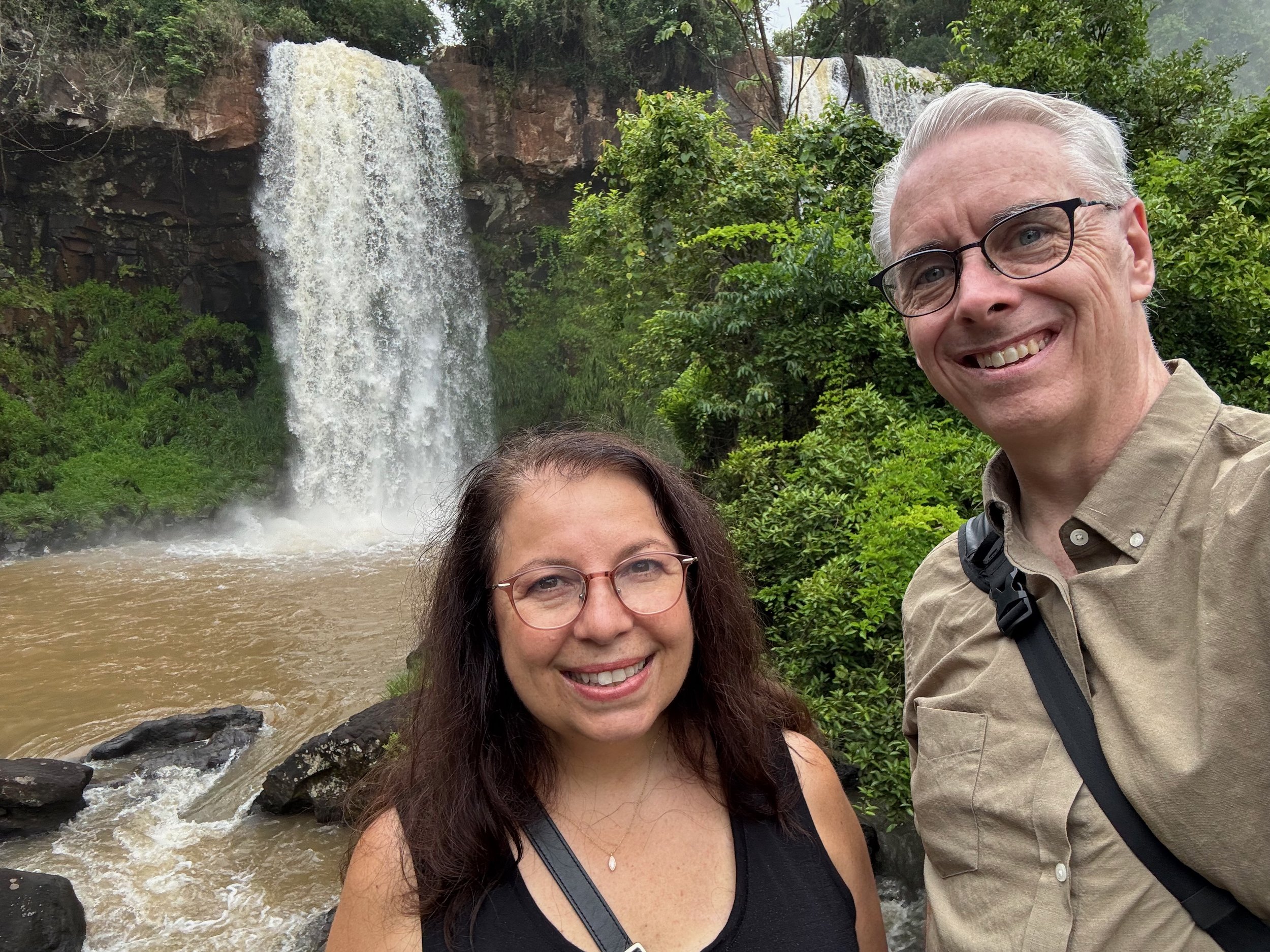






















We finally purchased sandals for Kevin. These are Keen Men's Clearwater CNX Lightweight Water Sandals, and we love how packable and lightweight they are! Sport sandal featuring bungee lacing system, patented toe guard, and rear pull-on loop, 4mm midsole drop , Aegis microbe shield treated lining. GET THIS GEAR